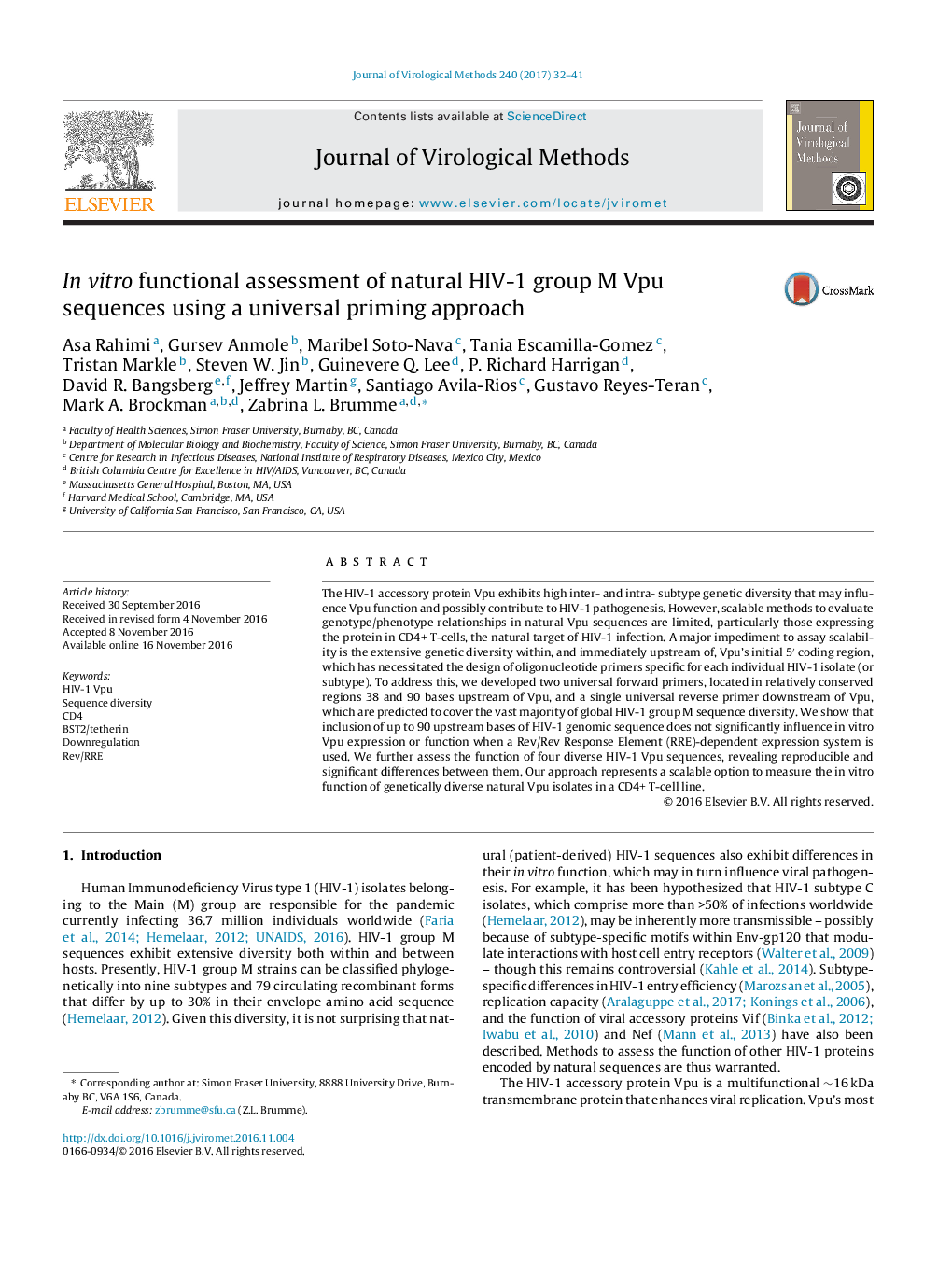| Article ID | Journal | Published Year | Pages | File Type |
|---|---|---|---|---|
| 5673119 | Journal of Virological Methods | 2017 | 10 Pages |
â¢Robust, scalable method for in vitro expression of natural HIV-1 vpu sequences.â¢Utilizes universal primers covering the majority of global HIV-1 group M diversity.â¢Allows more rapid assessment of Vpu-mediated CD4 and tetherin downregulation.
The HIV-1 accessory protein Vpu exhibits high inter- and intra- subtype genetic diversity that may influence Vpu function and possibly contribute to HIV-1 pathogenesis. However, scalable methods to evaluate genotype/phenotype relationships in natural Vpu sequences are limited, particularly those expressing the protein in CD4+ T-cells, the natural target of HIV-1 infection. A major impediment to assay scalability is the extensive genetic diversity within, and immediately upstream of, Vpu's initial 5â² coding region, which has necessitated the design of oligonucleotide primers specific for each individual HIV-1 isolate (or subtype). To address this, we developed two universal forward primers, located in relatively conserved regions 38 and 90 bases upstream of Vpu, and a single universal reverse primer downstream of Vpu, which are predicted to cover the vast majority of global HIV-1 group M sequence diversity. We show that inclusion of up to 90 upstream bases of HIV-1 genomic sequence does not significantly influence in vitro Vpu expression or function when a Rev/Rev Response Element (RRE)-dependent expression system is used. We further assess the function of four diverse HIV-1 Vpu sequences, revealing reproducible and significant differences between them. Our approach represents a scalable option to measure the in vitro function of genetically diverse natural Vpu isolates in a CD4+ T-cell line.
